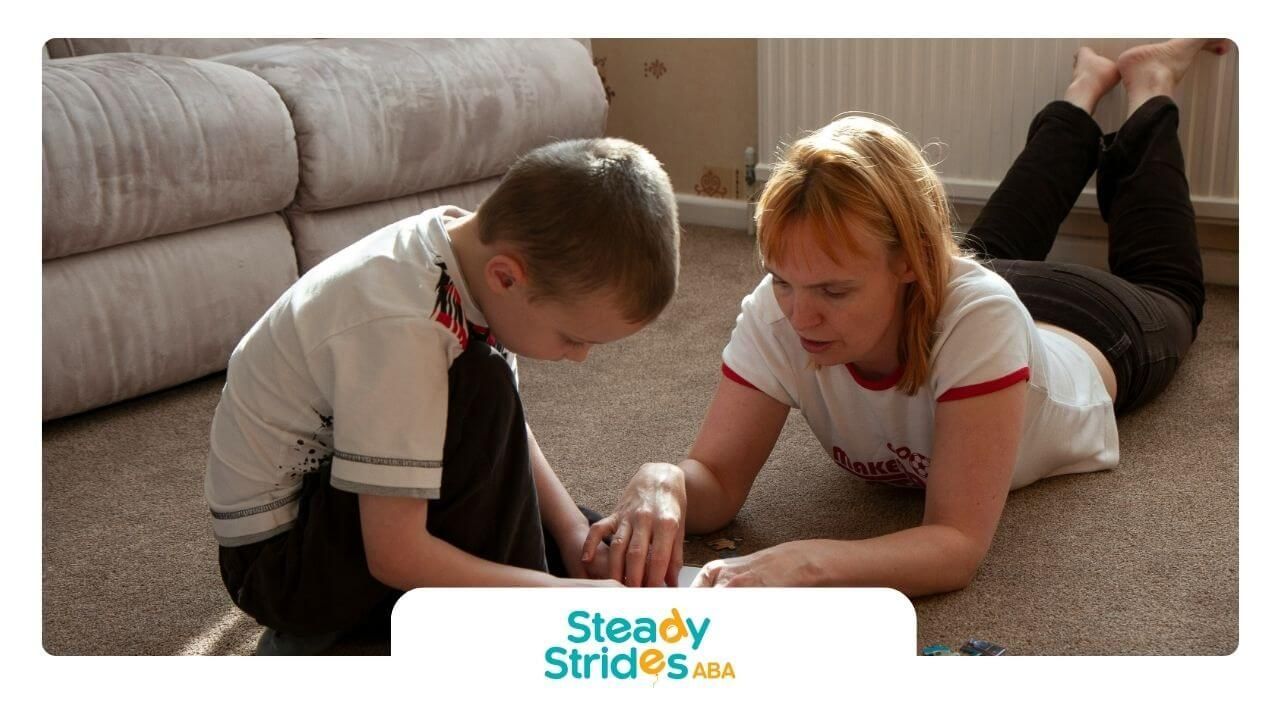Key Highlights
- A commonly cited statistic suggests that 87% of
autistic young adults live with a parent at some point after high school.
- Factors like household income, communication skills, and access to support services significantly impact living arrangements for autistic adults.
- While many desire independent living, challenges such as affordable housing shortages and the need for daily living skills training are major barriers.
- A variety of housing options exist, from family homes to group homes and supported apartments, each offering different levels of support.
- Improving the quality of life for adults on the autism spectrum involves expanding supportive programs and fostering community integration.
Introduction
As individuals on the autism spectrum transition into adult life, questions about their living situations become a central focus for them and their families. You may have heard the striking statistic that 87% of adults with autism live with their parents. But is this figure accurate, and what does it truly represent? This article explores the realities of living arrangements for autistic adults, examining the factors that influence independence, the available support systems, and the pathways toward a fulfilling and autonomous life.
Autism Spectrum Disorder (ASD) in Adults: An Overview
Autism Spectrum Disorder (ASD) in adulthood presents a wide range of strengths and challenges. For many autistic individuals, navigating adult life means finding the right balance of independence and support. Their living situations often reflect their specific support needs, which can vary greatly from one person to another.
Understanding these living arrangements is key. Many autistic adults continue to live with their parents due to a combination of factors, including the need for familiar support structures and economic realities. Exploring these reasons helps shed light on the broader landscape of housing for this community.
Defining Autism Spectrum Disorder in Adulthood
Autism Spectrum Disorder in adulthood is characterized by the same core traits seen in childhood, but they manifest differently as life demands change. These traits often involve persistent differences in social communication and interaction, along with restricted or repetitive behaviors. For an adult child on the spectrum, these unique challenges can influence everything from employment to relationships and daily routines.
The term "spectrum" is crucial because the level of support needed varies immensely. Some older adults with autism may live completely independent lives, while others require significant daily assistance. This diversity means there is no one-size-fits-all approach to housing or support.
When considering independent living, options for autistic adults include supported living arrangements, group homes, and supervised apartments. These choices are designed to provide a tailored level of support, helping individuals manage daily life while fostering autonomy and community participation.
Prevalence and Demographics of Autistic Adults in the United States
In the United States, it is estimated that about 2.21% of adults, or approximately 5.4 million people, are on the autism spectrum. These current statistics highlight a large and growing population of autistic adults navigating the transition to independent life. The prevalence of ASD in adults underscores the urgent need for adequate support services and housing options.
Demographics show that outcomes can be influenced by various factors. For instance, research indicates that household income plays a significant role in an individual's ability to live independently. Young adults from higher-income families are far more likely to have lived on their own compared to those from lower-income households.
Recent studies and surveys, including data from Drexel University, do confirm that a high percentage of autistic young adults live with their parents. The 87% figure specifically refers to those who have resided with a parent at some point after high school, pointing to a common experience in early adulthood.
How Autism Presents Among Adults
Autism in adult life often presents as a unique profile of strengths and challenges. Difficulties with communication skills and social skills can continue into adulthood, affecting one's ability to form relationships, navigate workplace dynamics, and engage with the community. These social differences can sometimes lead to feelings of isolation.
Beyond social aspects, managing daily living skills is another area where some autistic adults may need support. This can include tasks like budgeting, meal preparation, and maintaining a household. The level of support needed for these skills varies widely across the autism spectrum.
Living with parents can provide a structured environment that supports these needs, potentially improving the quality of life by reducing stress and ensuring daily tasks are managed. However, it can also limit opportunities to develop greater independence and new skills, showcasing the complex balance many families navigate.
Examining Living Arrangements for Adults with Autism
The living arrangements for autistic individuals are diverse, reflecting their unique needs and the availability of support services. While a significant number live with family, other housing options aim to promote independent living. Studies show that only about 19% of young adults with autism live independently, a much lower figure compared to their neurotypical peers.
This disparity highlights the barriers many face. The choice of living situation is influenced by personal skills, financial stability, and access to community resources. Understanding these factors is the first step toward expanding opportunities for autonomy. Below, we'll look at common residential situations and the influences behind them.
Common Residential Situations: At Home and Beyond
There is a wide range of living situations for adults with autism, each offering different levels of support. The most common arrangement, especially for young adults, is residing in family homes. This option provides a familiar environment and built-in support from relatives.
Beyond the family home, other residential settings are designed to foster greater independence. These alternatives are crucial for individuals who are ready for more autonomy but still require some level of assistance. These living situations often depend on the availability of local resources and funding.
Here are some common residential options:
- Independent Living: Living alone or with a roommate in a private apartment or house with minimal external support.
- Supported Living: Residing in one's own place with regular visits from support staff for tasks like budgeting or cooking.
- Group Homes: A shared residential setting where several individuals live together with on-site staff providing 24/7 support.
- Living with Parents: As noted, studies confirm it's true that a high percentage, around 87% of young autistic adults, live with their parents at some point after high school.
Factors That Influence Living Choices for Autistic Adults
An individual's living choice is shaped by a complex interplay of personal and external factors. The specific support needs of the person play a central role, as housing options must align with their ability to manage daily tasks and social situations. Individual needs can change over time, influencing long-term residential plans.
Support systems are another critical element. Strong family backing, access to community programs, and available government assistance can open doors to more housing options. Conversely, a lack of these supports can limit choices, often making living at home the only viable option. The trend for autistic adults may be slowly shifting as more support becomes available.
Several key factors determine living arrangements:
- Household Income: Higher family income is strongly linked to a greater likelihood of independent living.
- Communication Skills: Advanced social skills and conversation abilities are major predictors of living independently.
- Daily Living Skills: The ability to manage personal care, finances, and household chores is essential for autonomy.
- Availability of Services: Access to local support services and affordable housing directly impacts an individual's options.
Regional Variations in Living with Parents Across the United States
Across the United States, living arrangements for autistic adults are not uniform. Regional differences in the availability and funding of support programs can create significant disparities. States with robust Medicaid waiver programs and well-funded developmental disability services may offer more pathways to supported or independent living.
In contrast, areas with limited resources may see a higher percentage of autistic adults living in family homes simply because fewer alternatives exist. Economic conditions also play a part. In regions with a higher cost of living, finding affordable housing is a major challenge, pushing more individuals to remain with their parents.
While specific state-by-state data is limited, we can illustrate how factors create these regional differences. For example, access to support programs and economic conditions vary widely.
| Factor | High-Resource Region | Low-Resource Region |
|---|---|---|
| Support Programs | Wide availability of vocational training and supported living. | Limited or no state-funded community housing programs. |
| Household Income | Higher average incomes may allow families to afford private support. | Lower average incomes limit access to services and housing. |
| Housing Costs | May have more subsidized housing but high market rates. | Lower housing costs but fewer specialized options. |
The 87% Statistic: Origins and Current Data
The statistic that 87% of autistic adults live with their parents is widely circulated, but what is its origin and does current data support it? This figure often sparks conversations about independence and the challenges faced by the autistic community. It’s important to understand the context behind this number to get a clear picture.
While this statistic is a powerful indicator, it primarily reflects the experiences of young adults shortly after high school. It highlights a critical period of transition where many remain in family homes. Let's examine where this figure comes from and what more recent research says.
Where Did the 87% Statistic Come From?
The 87% statistic originates from longitudinal study data, particularly research tracking young adults on the autism spectrum after they leave high school. One of the key sources for these statistics in the United States is the A.J. Drexel Autism Institute, which has published extensive reports on outcomes for autistic individuals.
This figure specifically refers to the percentage of young adults on the autism spectrum who have lived with a parent or guardian at some point during their early 20s. So, is it true that 87% of adults with autism live with their parents? Yes, but it's crucial to understand this statistic reflects the experience of a specific age group during a transitional phase, not necessarily all autistic adults for their entire lives.
These current statistics have been instrumental in raising awareness within the autistic community and among policymakers about the significant need for better transition planning and support services to help young adults move toward greater independence.
Are There Recent Studies Supporting the 87% Figure?
Yes, recent studies continue to provide supporting data that aligns with the 87% figure, especially when focusing on autistic young adults. Research consistently shows that a large majority of young people on the spectrum remain in their family homes after completing high school. These findings underscore the challenges of transitioning to adulthood.
The prevalence of this living arrangement highlights systemic gaps in support for housing, employment, and post-secondary education. While the exact percentage may vary slightly between studies, the overall trend remains clear: independent living is not the immediate reality for most autistic young adults.
This data confirms that the need for robust support systems is as critical as ever. The statistic isn't just a number; it's a reflection of the economic, social, and personal barriers that prevent many from achieving autonomy. These recent studies reinforce the call for more resources and planning.
Trends in Autistic Adult Living Arrangements Over Time
Over the years, there have been some changing trends in living arrangements for autistic adults, though progress has been slow. Historically, options outside the family home were extremely limited. Today, there's a growing emphasis on community integration and independent living, leading to the development of more diverse housing models.
As awareness increases, so does the variety of support services designed to help individuals with different support needs. Innovations in vocational training, life skills coaching, and supported housing programs are gradually making independent living a more attainable goal for some. This reflects a broader societal shift toward empowering people with developmental disabilities.
Despite these positive changes, significant barriers remain, and the trend of living with parents is still dominant for young adults. However, the increased focus on person-centered planning and advocacy suggests that living arrangement trends will likely continue to evolve, offering more choices and opportunities for autonomy in the future.
Key Reasons Why Many Autistic Adults Live with Their Parents
Many autistic adults continue to live with their parents for a combination of practical, emotional, and financial reasons. The family home often provides a crucial support system that is tailored to the individual's unique needs, offering a level of stability and understanding that can be difficult to find elsewhere.
This arrangement helps manage challenges related to daily living skills and provides consistent family support. However, it's also often a result of external barriers, such as a lack of affordable housing and employment opportunities. We will now look closer at these interconnected factors.
Family Support and Structure
For many autistic adults, family support is the most reliable and consistent support system they have. Parents and relatives often have a deep understanding of their loved one's specific support needs, communication styles, and routines. This familiarity creates a safe and predictable environment that reduces anxiety and helps manage daily life.
The structure provided within the family home is another key reason for this living arrangement. Established routines for meals, chores, and appointments can be incredibly beneficial for individuals who thrive on predictability. This built-in structure helps manage executive functioning challenges that can make independent living difficult.
Ultimately, the family unit often serves as the primary source of emotional, practical, and financial assistance. Without robust external support systems in place, the family home remains the most viable and supportive option for a significant number of autistic adults.
Economic, Social, and Health Considerations
Economic factors are a major hurdle for autistic adults seeking independence. High unemployment and underemployment rates within the autistic community mean that many do not have the financial means to afford housing on their own. This is compounded by the fact that many available support programs have long waiting lists or are underfunded.
Social and mental health considerations also play a significant role. Moving out of a parent's home can be an isolating experience, and research shows that autistic adults report high rates of loneliness and depression. The familiar social interaction at home can be a protective factor for mental health.
Several interconnected challenges make moving out difficult:
- Financial Barriers: Limited household income and the high cost of housing are primary obstacles.
- Mental Health: Co-occurring conditions like anxiety and depression can make the transition to independent living more challenging.
- Lack of Support: A shortage of accessible support groups and community-based support programs leaves many without the resources they need.
Barriers to Independent Living for Adults with Autism
The path to independent living for adults with autism is often blocked by significant barriers. A major challenge is the development of daily living skills. Many individuals need explicit instruction and practice in areas like financial management, cooking, and home maintenance, which may not have been a focus of their education.
Furthermore, limited employment opportunities create financial instability. Even with vocational training, many autistic adults face difficulties finding and maintaining jobs that pay a living wage. This economic insecurity is one of the biggest challenges when trying to move out and sustain an independent household.
Here are some of the key barriers:
- Housing Shortages: There is a critical lack of affordable and supportive housing options across the country.
- Underdeveloped Life Skills: Difficulties with activities of daily living can make managing a household overwhelming without support.
- Social and Community Integration: Navigating social expectations and building a support network outside the family can be daunting.
Challenges Faced by Autistic Adults Seeking Independence
When autistic adults pursue independence, they often encounter a unique set of challenges that go beyond simply finding a place to live. These hurdles can range from managing daily responsibilities to navigating complex social and systemic barriers. A lack of robust support systems can make the goal of living alone feel out of reach.
Developing the necessary daily living skills is a common struggle, as is finding suitable and affordable housing options. Let's explore some of the specific difficulties that stand in the way of achieving greater autonomy.
Difficulties in Daily Living Skills and Self-Sufficiency
A significant challenge for many autistic adults is the mastery of daily living skills essential for self-sufficiency. These skills, often called activities of daily living, include a wide range of tasks that neurotypical individuals may take for granted. Difficulties in these areas can make living independently without support a daunting prospect.
For example, executive functioning differences can make multi-step tasks like grocery shopping and meal preparation feel overwhelming. Similarly, remembering to maintain personal hygiene or manage medications on a consistent schedule can be difficult without established routines or reminders. Skills development in these areas is crucial for independence.
Living with parents can have a mixed impact on these daily skills. While it provides a safety net, it can also lead to fewer opportunities for hands-on practice. Here are some key areas where difficulties often arise:
- Household Management: Tasks like cleaning, laundry, and paying bills.
- Personal Care: Consistent personal hygiene and medication management.
- Meal Planning: The entire process from grocery shopping to cooking.
Navigating Housing Options and Availability
Finding the right housing is one of the biggest hurdles for autistic adults aiming for independence. The search is not just about finding a physical space but also about securing an environment that is both safe and supportive. Unfortunately, there is a severe shortage of suitable housing options.
Affordable housing is a primary concern for over 75% of autistic adults. Even when community housing is available, it often comes with long waiting lists and may not be equipped to provide the necessary support services. This scarcity forces many to remain in less-than-ideal living situations or stay with family longer than they wish.
Available resources include government-subsidized housing, group homes, and supported living programs. However, accessing these resources can be a complex and frustrating process. Navigating the paperwork, eligibility requirements, and waiting lists requires persistence and often the help of a dedicated advocate or case manager.
Impact of Societal Attitudes and Policy Barriers
Societal attitudes and misunderstandings about autism create subtle but powerful barriers to independence. Stigma and low expectations can limit opportunities for employment, community participation, and social connection, which are all foundational elements of a self-sufficient life. These attitudes can make it challenging for autistic adults to be seen as capable individuals.
Policy barriers also play a critical role. Many government support programs are underfunded, fragmented, or difficult to navigate. The "services cliff" that occurs when an individual turns 21 or 22 and loses educational entitlements leaves many without the support they need to transition into adult life successfully.
Effective advocacy is essential to dismantle these barriers. By pushing for more inclusive policies, increased funding for support services, and greater public awareness, we can create a society where autistic adults have the same opportunities as their neurotypical peers to live independently and thrive.
Living with Parents: Effects on Autistic Adults
Living in family homes can have a profound and complex effect on autistic adults. On one hand, it provides a stable environment with built-in emotional and practical support. On the other hand, it can sometimes hinder the development of independence and daily living skills.
This living arrangement impacts everything from mental health to social opportunities and overall quality of life. Understanding these effects is important for families as they navigate the journey toward adulthood. Let's look at how living at home influences well-being and personal growth.
Influence on Social, Emotional, and Psychological Well-Being
The impact of living with parents on an autistic adult's well-being can be a double-edged sword. The consistent presence of family can be a powerful buffer against the high rates of loneliness and depression reported in the autistic community. This built-in support system provides emotional security and reduces the stress of navigating a sometimes-unwelcoming world.
However, this arrangement can also limit opportunities for social interaction outside the family unit. Building friendships and romantic relationships may be more challenging without the natural social environments that come with independent living, such as having roommates or living in a community-focused apartment complex.
Ultimately, the effect on mental health and emotional well-being depends on the family dynamic. A supportive, encouraging environment that promotes autonomy can positively affect quality of life. In contrast, an overly protective setting might inadvertently foster dependence and lower self-esteem.
Impact on Development of Daily Living Skills
Living with parents can significantly impact the development of daily living skills for autistic adults. In a supportive family environment, parents can act as coaches, providing life skills training in a safe and structured setting. This allows the individual to learn skills like budgeting, cooking, and cleaning at their own pace.
Conversely, if parents or caregivers handle most of these tasks, it can reduce the opportunity for the autistic adult to practice and master them. This can inadvertently slow down skills development and make a future transition to independent living more difficult. The key is finding a balance between providing support and fostering self-reliance.
Effective communication skills within the family are crucial. Openly discussing goals for independence and creating a plan to gradually transfer responsibilities can make a huge difference. This collaborative approach ensures that living at home becomes a stepping stone toward greater autonomy rather than a long-term default.
Quality of Life Considerations When Living at Home
When considering the quality of life for autistic adults living at home, it's important to look beyond just room and board. The home environment itself plays a crucial role. A household that respects the individual's need for routine, sensory comfort, and personal space can contribute to a high quality of life.
Research shows that while autistic adults living with family report similar satisfaction with their physical accommodations as their peers, their overall life satisfaction is often lower.
This gap can be attributed to feelings of loneliness, a lack of social opportunities, and a desire for greater independence. The right support systems can help bridge this gap.
To enhance quality of life, it's beneficial for families to encourage community participation, support hobbies, and foster connections outside the home. A fulfilling life involves more than just a comfortable living situation; it includes purpose, social connection, and personal growth, all of which can be nurtured within a supportive family setting.
Pathways and Resources for Greater Independence
For autistic adults and their families, the journey toward independent living is filled with questions about what resources are available. Fortunately, a growing number of pathways and support services are designed to make this goal more achievable. These resources focus on everything from housing to skill-building and community integration.
From supportive housing opportunities to government assistance and local support programs, there are many avenues to explore. By leveraging these resources, individuals can build the skills and confidence needed for a more autonomous life. Here are some of the key options available.
Supportive Housing and Assisted Living Opportunities
Supportive housing is a key resource for autistic adults who want to live independently but need some level of assistance. These models are designed to bridge the gap between living with family and living completely on one's own. They combine affordable housing with coordinated support services to help residents thrive.
Assisted living opportunities can range from apartments with on-call staff to shared homes where residents learn life skills together. The goal of these programs is to provide just enough support to ensure safety and well-being while maximizing personal freedom and autonomy.
Here are a few types of supportive housing:
- Group Homes: Shared residences where a small number of individuals live together with round-the-clock staff support.
- Supervised Apartments: Individual or shared apartments within a complex where support staff are available to assist with daily needs.
- Supported Living Programs: Services that help an individual live in their own chosen home or apartment with tailored support.
Community Programs and Professional Services in Texas and New Mexico
In states like Texas and New Mexico, a variety of community programs and professional services are available to help autistic adults on their path to independence. These resources are often provided by state agencies, nonprofit organizations, and private providers, and they focus on building essential life skills.
Families in Texas and New Mexico can look for local organizations that offer vocational training, which is crucial for securing meaningful employment. Additionally, many centers provide social skills groups and life skills coaching to help individuals navigate community life more confidently. Accessing these support services can be a game-changer for many families.
Here are some types of programs to look for in Texas and New Mexico:
- Vocational Rehabilitation Services: State-funded programs that help individuals with disabilities prepare for, find, and keep jobs.
- Medicaid Waiver Programs: These can provide funding for a wide range of support services, including in-home assistance and community-based support.
- Local Autism Societies: These organizations often offer support groups, resource directories, and workshops for families and autistic adults.
Government Assistance and Advocacy for Autistic Adults
Government assistance programs are a vital resource for many autistic adults and their families, providing financial and healthcare support that makes independence more feasible. Navigating these systems can be complex, but they are designed to provide a safety net for individuals with disabilities.
Advocacy plays a huge role in ensuring these programs are properly funded and accessible. Advocacy groups work at local, state, and federal levels to influence policy and protect the rights of autistic individuals. These organizations also provide invaluable information and support to families trying to access services for their adult child.
Key government and advocacy resources include:
- Supplemental Security Income (SSI): A federal program that provides monthly payments to adults with disabilities who have little or no income.
- Medicaid: Provides health coverage and can fund a wide range of long-term support services through waiver programs.
- ABLE Accounts: Tax-advantaged savings accounts for individuals with disabilities that allow them to save money without losing eligibility for benefits like SSI.
Changing Trends and Future Directions in Residential Choices
The landscape of residential choices for autistic adults is slowly but surely evolving. While living with family remains common, there is a clear shift toward models that prioritize independent living and community integration. These changing trends are driven by increased awareness, advocacy, and innovation in support services.
The future directions in housing point toward more person-centered and technology-driven solutions. As society becomes more inclusive, we can expect to see more creative and flexible options that empower autistic adults to choose where and how they want to live. Let's explore these exciting developments.
Innovations in Independent Living Supports
Yes, the trend in living arrangements for autistic adults is changing, thanks in large part to innovations in independent living supports. Modern support programs are moving away from one-size-fits-all models and toward highly personalized, person-centered approaches. This means support is tailored to an individual's specific goals, strengths, and needs.
One major innovation is the focus on proactive life skills training that begins long before an individual plans to move out. These programs embed skills development in real-world settings, helping individuals build confidence in managing a household, navigating transportation, and engaging with their community.
Here are some key innovations shaping the future:
- Customized Support Plans: Creating plans that focus on an individual's aspirations rather than just their deficits.
- Community-Based Training: Shifting life skills training from clinical settings to the actual communities where people will live.
- Peer Mentorship Programs: Connecting autistic adults with peers who have successfully navigated the path to independence.
The Role of Technology in Fostering Independence
Technology is playing an increasingly important role in fostering independence for autistic adults. Smart devices, apps, and assistive technologies can help bridge gaps in executive functioning and communication skills, making daily tasks more manageable. This tech support can improve quality of life, whether an individual is living with parents or on their own.
For example, smartphone apps can provide reminders for medication management, create visual schedules for daily routines, and offer step-by-step instructions for cooking or cleaning. This allows for greater autonomy without constant human supervision. Wearable devices can also help monitor stress levels and provide prompts for calming strategies.
Technology offers powerful tools for independence:
- Scheduling Apps: Help with time management and remembering appointments.
- Communication Aids: Augmentative and alternative communication (AAC) apps can support individuals with limited verbal communication skills.
- Smart Home Devices: Voice-activated assistants can control lights, thermostats, and security, simplifying the home environment.
Anticipated Shifts in Living Patterns for Autistic Adults
Looking ahead, we can anticipate several significant shifts in the living patterns of autistic adults. As advocacy efforts continue to succeed and awareness grows, there will likely be a greater public and political will to fund and create diverse housing options. This could reduce the reliance on family homes as the primary living arrangement.
One of the most promising anticipated shifts is the move toward more inclusive community living. This involves creating neurodiverse neighborhoods and co-housing arrangements where autistic adults and neurotypical individuals live together, fostering natural supports and genuine social integration. This model contrasts sharply with segregated group home settings of the past.
Ultimately, the trend is moving toward choice. The goal is to create a system where autistic adults, with their families and support teams, can choose from a range of viable, affordable, and supportive living options that best fit their vision for a good life.
Perspectives from Families and the Autistic Community
To truly understand why so many autistic adults live with their parents, it's essential to listen to the perspectives of families and members of the autistic community themselves. Their lived experiences provide invaluable insights that statistics alone cannot capture.
These personal stories reveal the day-to-day realities of navigating support systems and seeking independence.
From the hopes and fears of parents of adults to the desires and frustrations of autistic individuals, these perspectives paint a rich and nuanced picture. Let's hear what they have to say about their living experiences.
Stories from Adults with Autism About Their Living Experiences
The living experiences of autistic adults are incredibly diverse. Personal accounts often highlight a strong desire for independence, coupled with the frustration of facing immense barriers. Many describe the challenge of trying to find affordable housing that also feels safe and accommodating to their sensory needs.
Feelings of loneliness are a recurring theme in many stories. While living alone can be empowering, it can also lead to social isolation, especially if community support is lacking. This is one of the most significant challenges autistic adults face when they move out on their own.
Their stories reveal common threads:
- The desire for autonomy: Many express a deep wish to have their own space and make their own choices about their daily life.
- The struggle for support: Individuals often describe the difficulty of finding and coordinating the support services they need to succeed.
- The importance of community: Finding a sense of belonging and connection is a key component of a happy, independent life.
Insights from Parents, Caregivers, and Advocates
Parents of adults with autism often share a mix of hope and concern for their children's futures. A primary reason they continue to provide a home is the "services cliff" — a severe drop-off in support systems after high school ends. Caregivers often feel they are the only safety net available.
Advocates echo these concerns, pointing to systemic failures as a main reason so many autistic adults live at home. They highlight long waiting lists for housing, underfunded support programs, and a lack of vocational training as key issues that need to be addressed at a policy level. Parental support becomes the default, not always by choice.
Key insights from this group include:
- Fear for the Future: Many parents worry about what will happen to their adult child when they are no longer able to provide care.
- The Need for a Plan: Advocates stress the importance of early and comprehensive transition planning for every family.
- A Call for Systemic Change: There is a consensus that better-funded and more accessible support systems are urgently needed.
Conclusion
Understanding the living arrangements of adults with autism is crucial for families and caregivers. The statistic that 87% of autistic adults live with their parents highlights the challenges many face in achieving independence due to various factors such as economic constraints, societal attitudes, and daily living skills. It’s important for families to recognize the support systems available and the impact that living situations can have on an individual’s well-being and development. As we look to the future, innovations in supportive housing and community programs may pave the way for greater independence among autistic adults. If you’re interested in exploring resources and pathways to support independence, don’t hesitate to reach out for a free consultation.
At Move Up ABA, we specialize in supporting individuals with Level 1 Autism by providing personalized plans for ABA therapy in Texas and New Mexico that address the unique challenges and strengths of each individual. Whether you are a parent, educator, or therapist, our team is here to guide you with expert strategies that help foster communication, social skills, and overall development.
Ready to provide the best support for your child? Contact us today
Frequently Asked Questions
Is it true that 87% of adults with autism live with their parents?
Yes, this statistic is often cited from studies of autistic young adults. It reflects that 87% of individuals on the autism spectrum have lived in family homes at some point in their early 20s. While it highlights a common transition challenge, it doesn't represent all autistic adults' long-term living arrangements.
What options do autistic adults have for living independently?
Options for independent living include living alone or with roommates, supportive housing with on-site staff, and group homes. Success in these housing options is often linked to support services that focus on skills development, such as financial management and community integration, provided by various support programs.
How does living with parents affect the quality of life for autistic adults?
Living with parents can offer emotional security and support for mental health, positively affecting quality of life. However, it can also limit opportunities for social skills development and practicing daily living skills, which may create a desire for more independence and social connection outside the family home.
SOURCE:
https://www.cdc.gov/autism/signs-symptoms/index.html#:~:text=Autism%20spectrum%20disorder%20(ASD)%20is,%2C%20moving%2C%20or%20paying%20attention.
https://www.psychiatry.org/patients-families/autism/what-is-autism-spectrum-disorder
https://www.quora.com/Do-most-autistic-adults-live-with-their-parents
https://pmc.ncbi.nlm.nih.gov/articles/PMC11447388/
https://ojin.nursingworld.org/table-of-contents/volume-27-2022/number-3-september-2022/adults-and-seniors-with-autism-spectrum-disorder/













